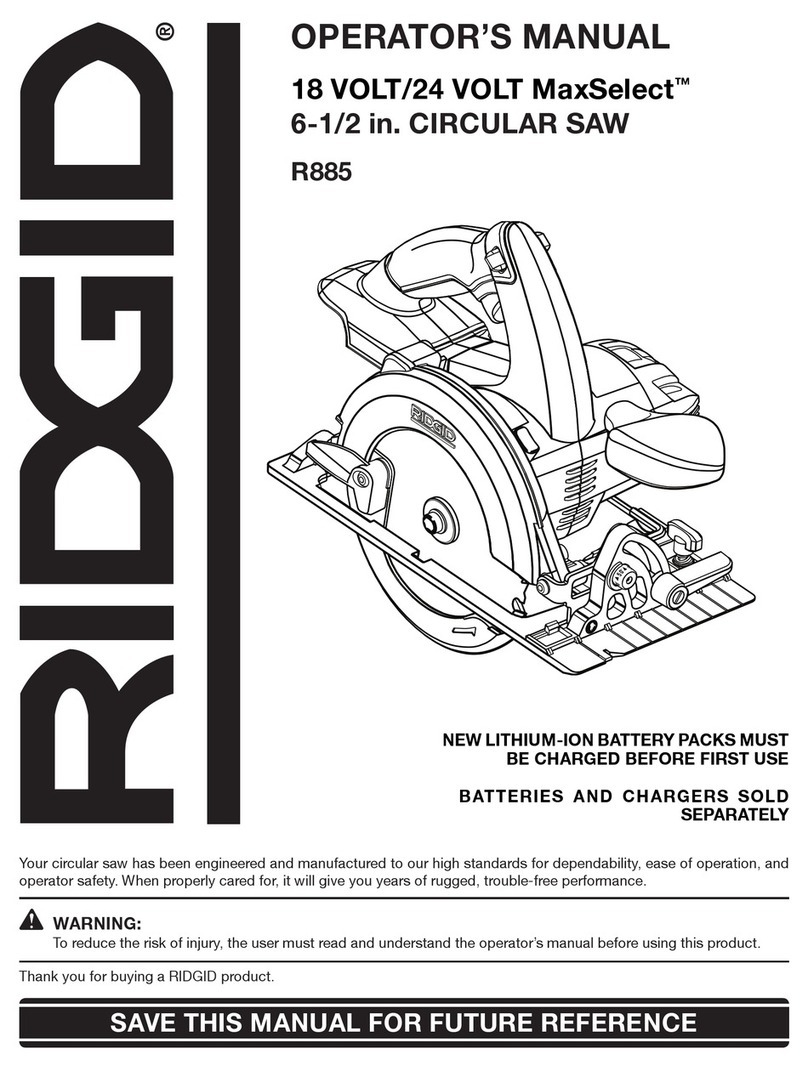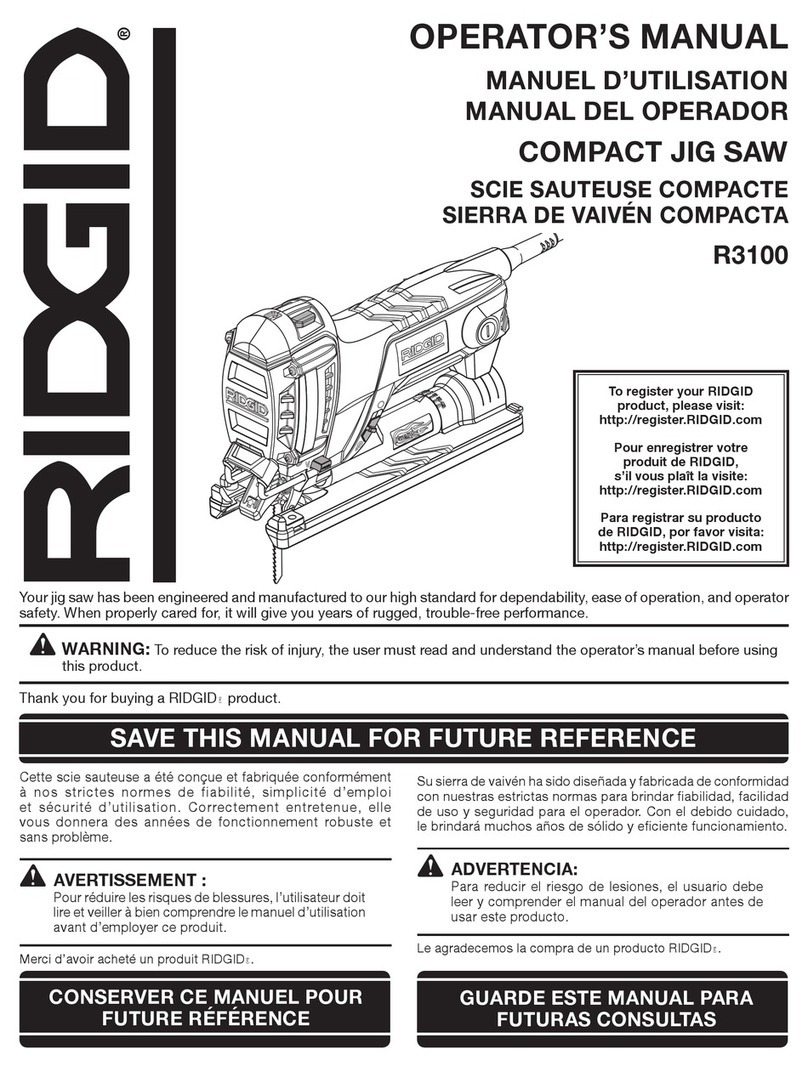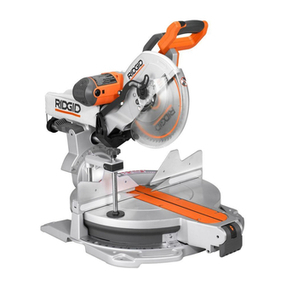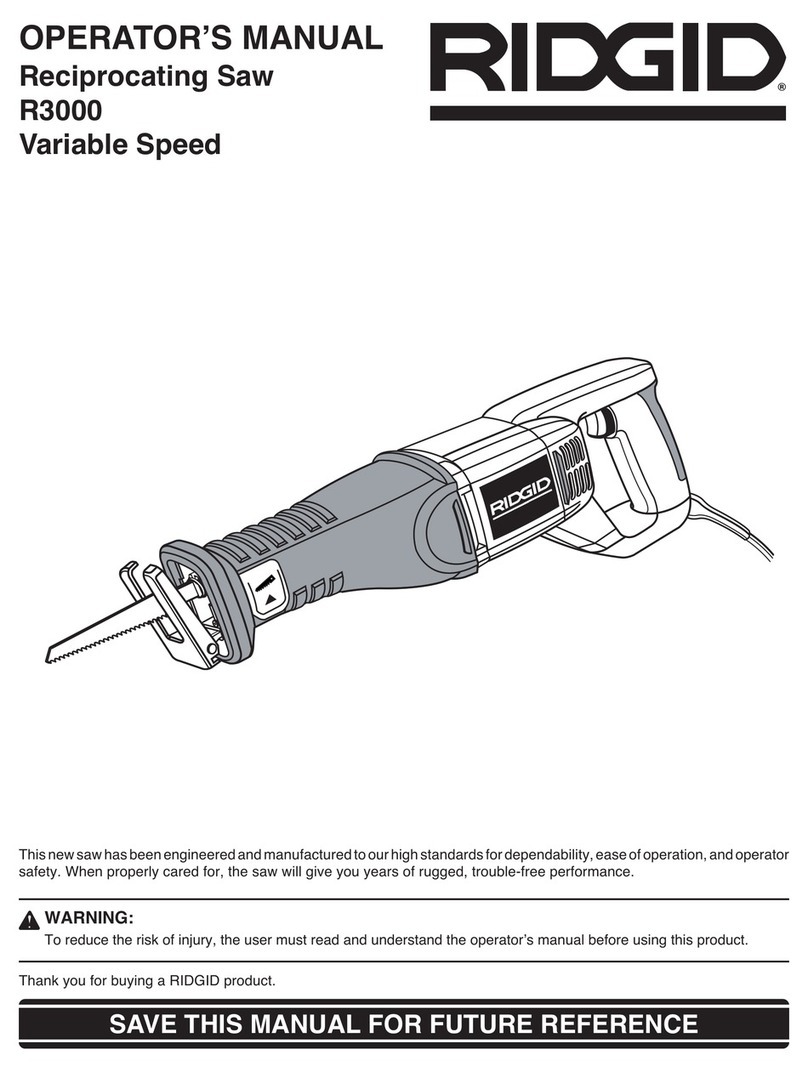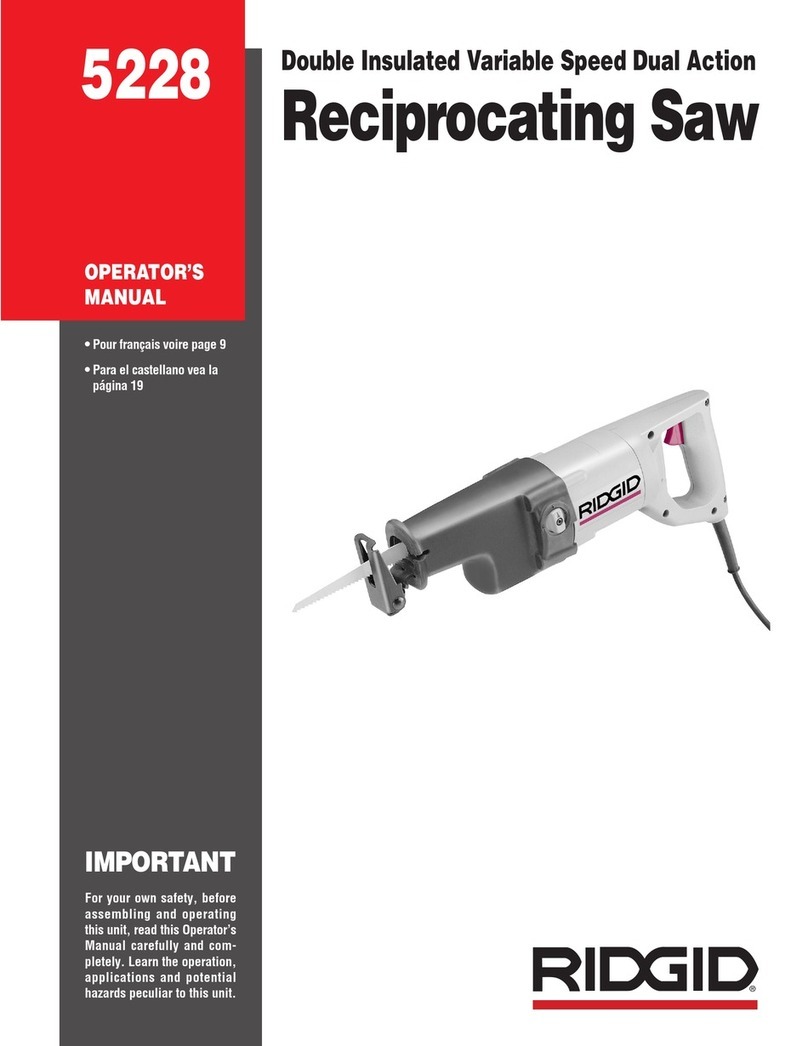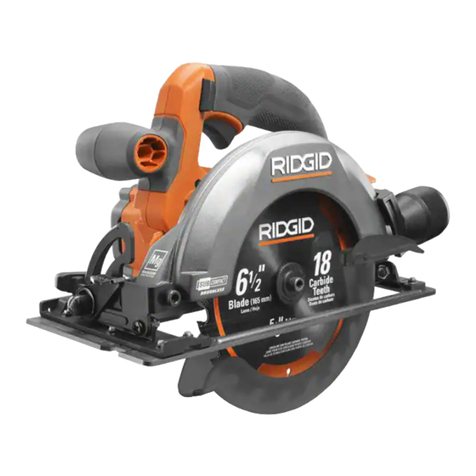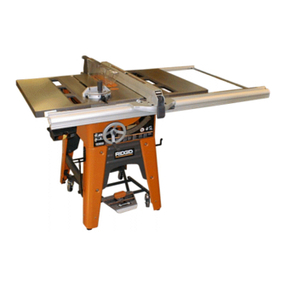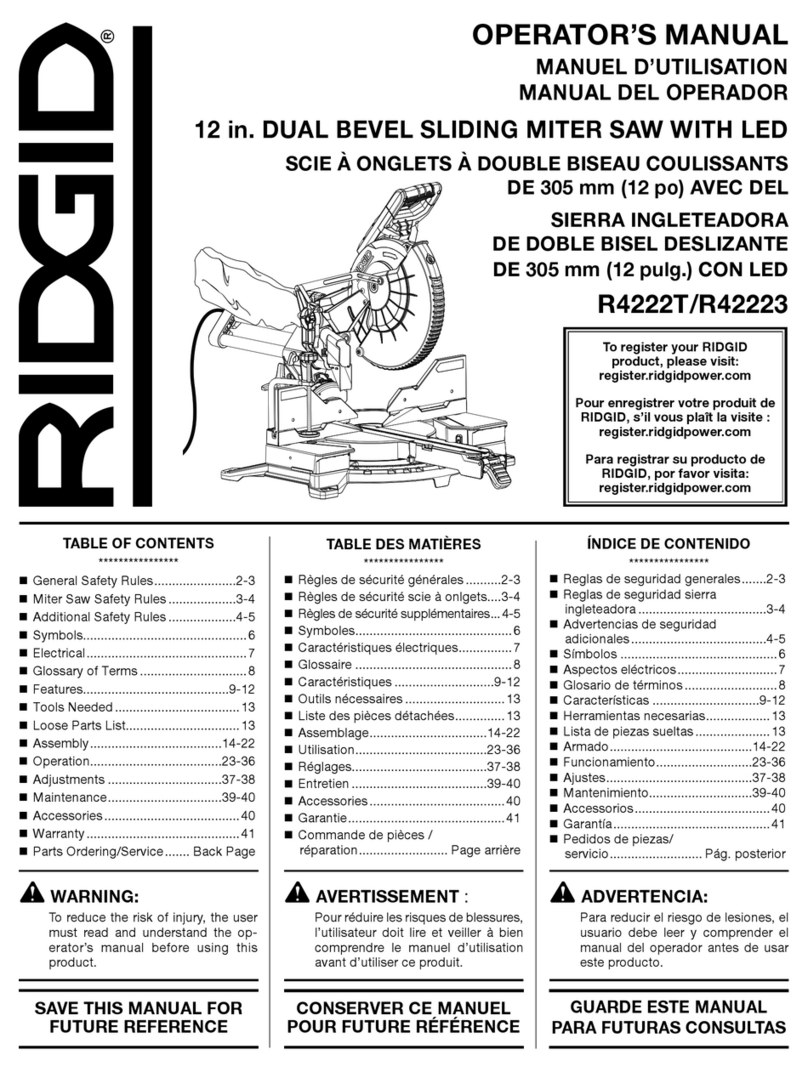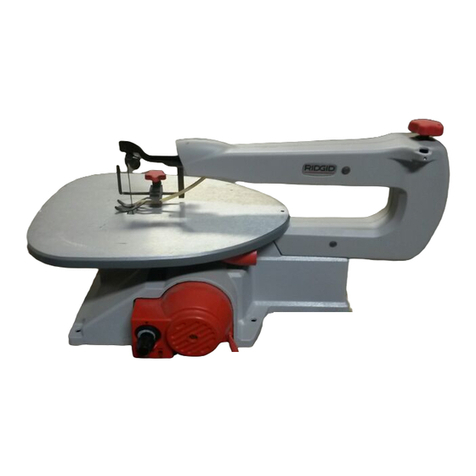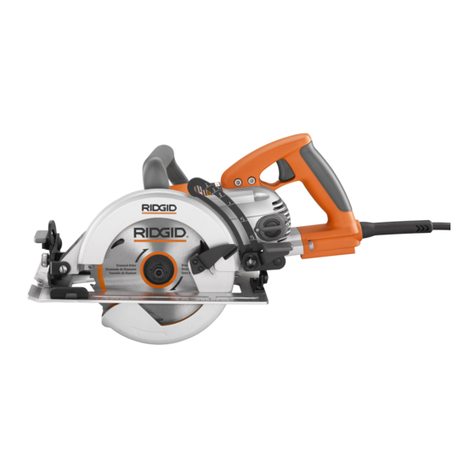
2
Table of Contents
Section Page
Table of Contents .......................................... 2
Safety Instructions For Table Saw ................3
Safety Signal Words .................................. 3
Before Using The Saw ............................... 3
When Installing Or Moving The Saw ............4
Before Each Use ........................................... 4
To Reduce theRisk of Injury From Jams,SlipsOr
Thrown Pieces (Kickbacks Or Throwbacks) ..5
Plan Ahead To Protect Your Eyes, Hands,
Face and Ears ............................................ 6
Whenever Sawblade Is Spinning ................. 7
Additional Safety Instructions For: Ripping ... 8
Additional Safety Instructions For: Crosscut . 9
Additional Safety Instructions For
Herc-U-Lift™ Caster System: ................... 9
Glossary of Terms for Woodworking .............9
Motor Specifications and Electrical
Requirements .........................................11
Power Supply and Motor Specifications ..11
General Electrical Connections ...............11
Changing Motor Voltage ..........................13
Motor Thermal Overload Protector ..........14
Wire Sizes ................................................14
Unpacking and Checking Contents .............15
Tools Needed ...........................................15
Unpacking .................................................15
List of Loose Parts ....................................16
Herc-U-Lift™ Caster Carton .....................17
Loose Parts ...............................................17
Assembly .....................................................17
Installing Handwheels ...............................17
Assembling Leg Stand ..............................18
Mounting Your Saw ..................................19
Assembling Table Extensions ...................20
Checking Table Insert ...............................21
Checking Heeling Adjustment or Parallelism
of Sawblade to Miter Gauge Groove ......22
Checking Blade Tilt, or Squareness of Blade
to Table ..................................................24
Checking Tilt Mechanism ..........................25
Assembling Herc-U-Lift™ Caster System .26
Assembly Tips ..........................................26
Upper Assembly .......................................26
Lower Assembly .......................................27
Assembling Herc-U-Lift™ Caster System to
Saw ........................................................28
Installation Instructions .............................28
Operation of Herc-U-Lift™ Caster System 29
Installing Front Rip Fence Guide Bar ........30
Installing Rear Fence Guide Bar ...............31
Adjusting Rip Fence Guide Bars ...............32
Installing Spacer Bar .................................33
Rip Fence Alignment Adjustment .............34
Rip Fence Lock Lever Adjustment ............34
Adjusting Fence Indicator .........................35
Installing Blade Guard ..............................35
Aligning Blade Guard ................................36
Section Page
Mounting the Motor ...................................37
Installing Belt ............................................38
Installing Belt Guard .................................38
Mounting Switch and End Caps ................39
Securing Electrical Cords .........................40
Installing Guide Bar End Caps ..................40
Getting to Know Your Table Saw ................41
Additional Safety Instructions When Using Zero
Clearance Insert......................................43
Remove the Existing Metal Insert..............43
Installing Zero Clearance Insert/Sawblade 43
Installing Zero Clearance Insert/Dado Blades44
Operation Tips ..........................................45
Safety Instructions for Basic Saw Operations 48
Before Each Use .........................................48
ToReducethe Risk of Injury From Jams, SlipsOr
Thrown Pieces (KickbacksOr Throwbacks) 48
Plan Ahead To Protect Your Eyes, Hands,
Face and Ears ..........................................49
Whenever Sawblade Is Spinning .............50
Work Feed Devices .....................................51
Attaching Wood Face Board .....................51
Push Block ................................................52
Auxiliary Fence .........................................53
Fence Extension........................................54
Basic Saw Operations .................................55
Using the Miter Gauge ..............................55
Additional Safety Instructions for Crosscutting 55
Crosscutting ..............................................55
Repetitive Crosscutting .............................56
Miter Crosscutting .....................................57
Bevel Crosscutting ....................................57
Compound Crosscutting ...........................57
Using the Rip Fence .................................58
Additional Safety Instructions for Rip Cuts 58
Ripping ......................................................59
Bevel Ripping Narrow Work ......................60
Using Featherboards for Thru-Sawing ......61
Using Featherboards for
Non Thru-Sawing ....................................61
Resawing ..................................................62
Using Carbide Tipped Blades ...................63
Dadoing ....................................................63
Rabbeting .................................................64
Ploughing and Molding .............................64
Molding .....................................................65
Adjustments .................................................66
Miter Gauge ..............................................66
Maintaining Your Table Saw .......................67
Maintenance .............................................67
Lubrication ................................................68
RIDGID Recommends the Following
Accessories ............................................68
Troubleshooting ...........................................69
General .....................................................69
Motor .........................................................70
Repair Parts ................................................72
